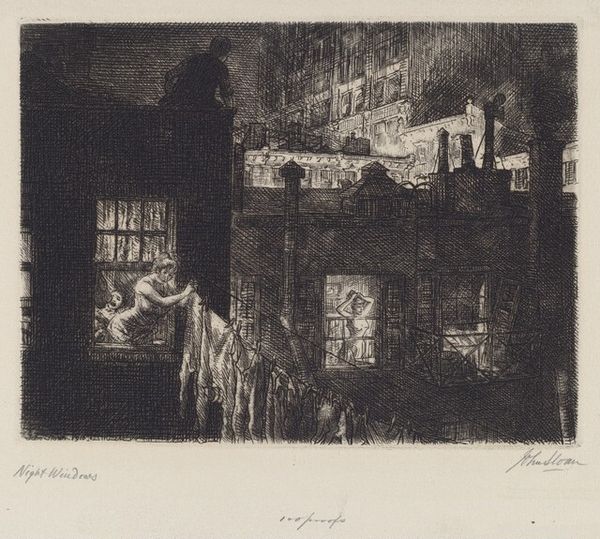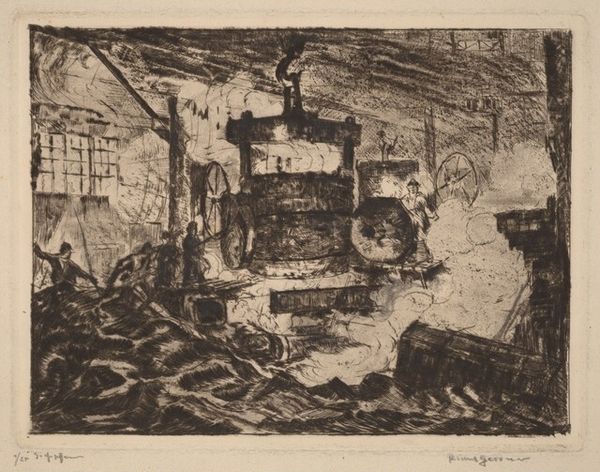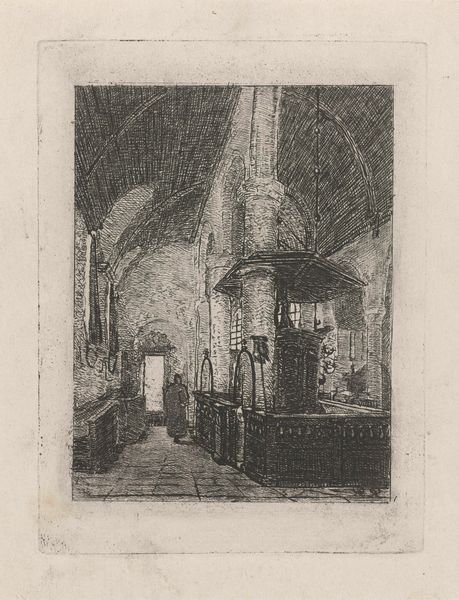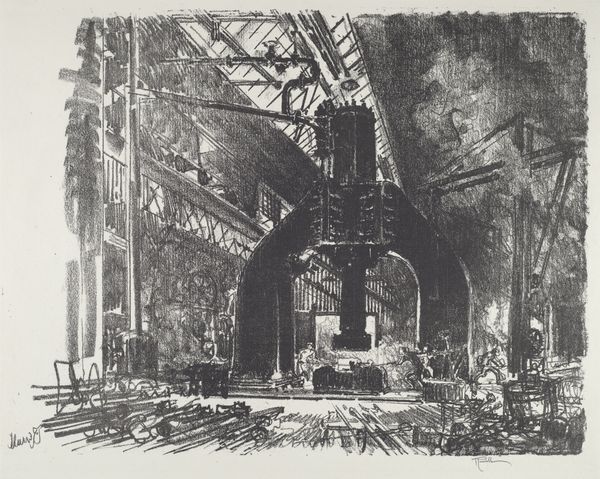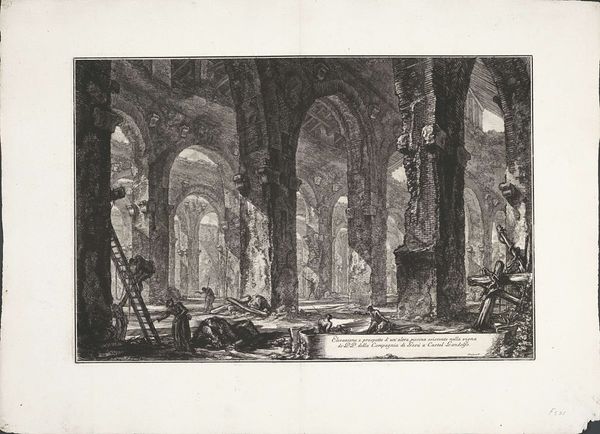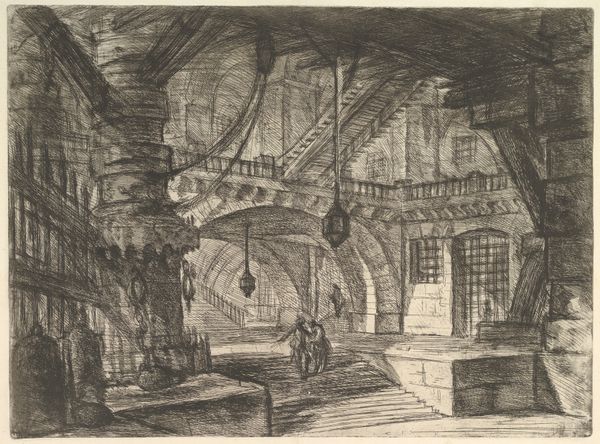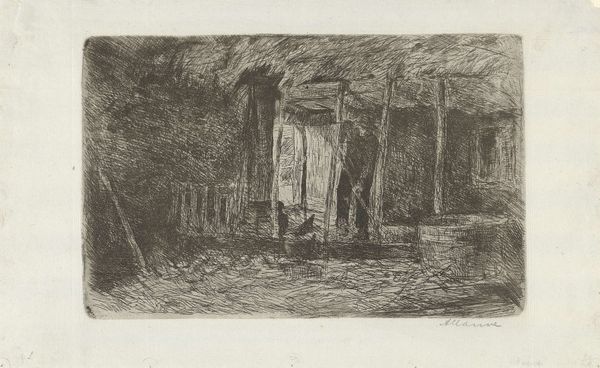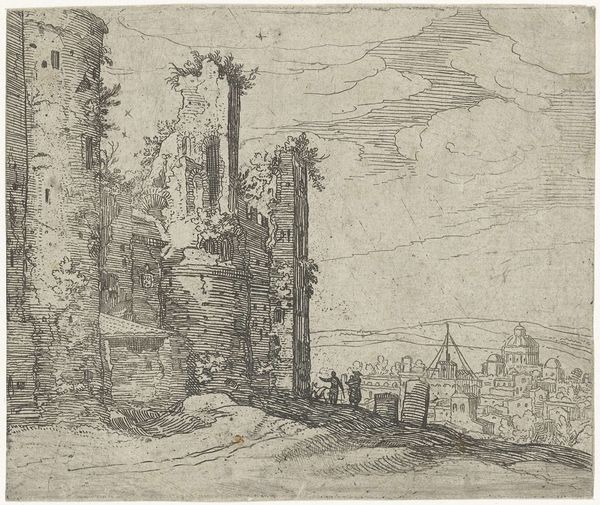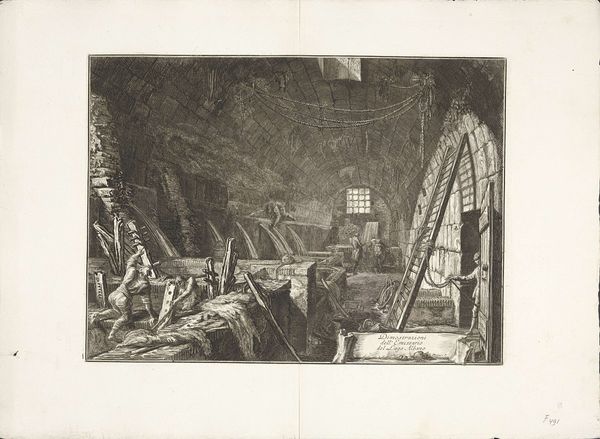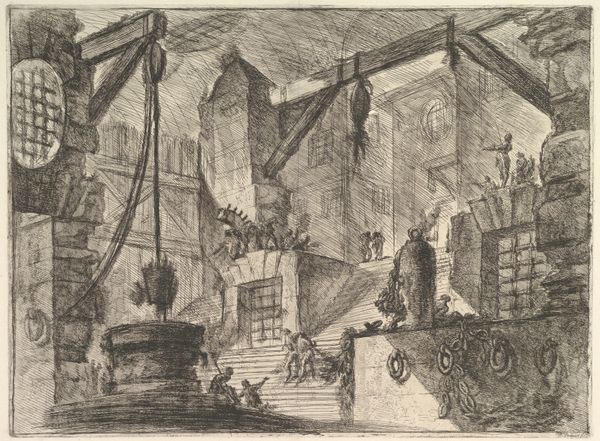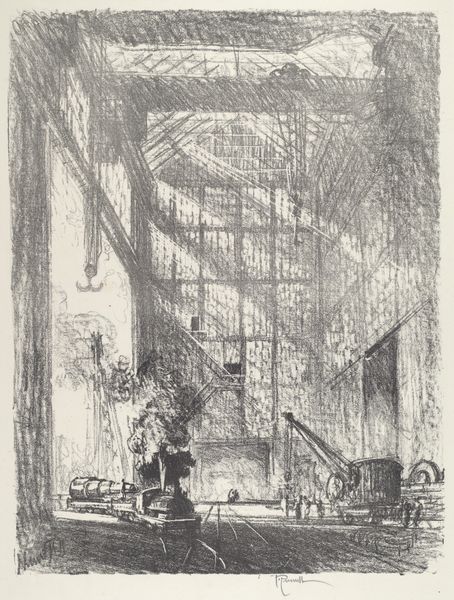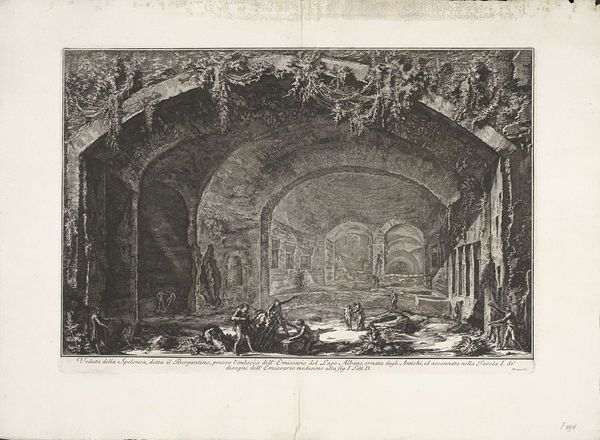
drawing, print, graphite
#
pencil drawn
#
drawing
# print
#
landscape
#
charcoal drawing
#
figuration
#
graphite
#
realism
Dimensions: image: 26.99 × 34.93 cm (10 5/8 × 13 3/4 in.) sheet: 32.07 × 42.07 cm (12 5/8 × 16 9/16 in.)
Copyright: National Gallery of Art: CC0 1.0
Editor: So, here we have Percy Albee's "Untitled (Man and Furnace)," a print from the early 20th century, primarily done in graphite. It feels… heavy. The density of the lines creates a claustrophobic, industrial atmosphere. What do you see in it? Curator: I see the symbolic weight of the machine age bearing down on the individual. Notice how the furnace looms, almost anthropomorphic in its scale and presence, dominating the figure of the man. Editor: Yes, he looks almost like he's tending to a giant, slumbering beast. Is there a sense of reverence there, or perhaps fear? Curator: Perhaps both. Think about the cultural narrative surrounding industry at this time. For some, it represented progress and power; for others, alienation and dehumanization. Albee captures that duality. The furnace, rendered with such detail, almost becomes a deity, demanding constant attention, human sacrifice even. The figure almost disappears within the complexity of industrial progress. Editor: That's a compelling point. It's not just about man versus machine, but also about the psychological impact of industrialization on the individual's sense of purpose and place. Are the valves and levers around the figure indicators? Curator: They are symbolic, almost diagrammatic of industrial influence; suggesting manipulation or connection through its components and technologies. Albee emphasizes these to deepen his point. He places the man in front, not to focus on him, but rather as a reference point, contrasting the grand mechanical presence to humanity, to consider how culture remembers labor during the early 20th Century. Editor: I never thought of it like that before, seeing the whole factory almost as an oppressive cultural force bearing down on a single person, not merely representing physical labour, it offers more narrative than I initially perceived. Thank you for expanding my understanding of the art. Curator: And thank you. These images can really only find meaning through a critical cultural interpretation and application. I appreciate that you took time to notice this with me.
Comments
No comments
Be the first to comment and join the conversation on the ultimate creative platform.
